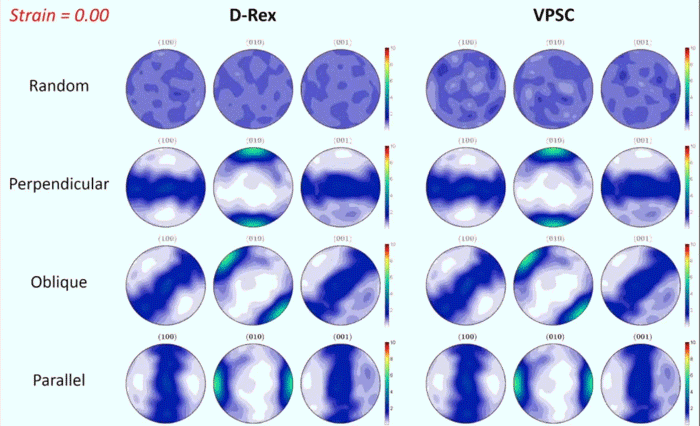LINKS & MORE
INSPIRATION
Geology recommended links
Geology recommended links
Geology recommended links
Geology recommended links
LINKS & MORE
INSPIRATION
Geology recommended links
Geology recommended links
Geology recommended links
Geology recommended links
LAB MEMBERS
LAB MEMBERS


RESEARCH
Evolution of Olivine Crystallographic Preferred Orientation and Seismic Anisotropy in the Mantle
Earth’s mantle includes large regions where mantle rocks deform in a creep-like viscous fashion - mantle flow. The flow is the manifestation of plastic deformation accommodated through the movement of crystallographic defects. To reveal deformation and flow in the mantle, seismologists probe its anisotropic elastic properties (i.e., seismic anisotropy). I am investigating the effect that deformation and deformation history have on the mantle seismic signature using both experimental and numerical tools.
The experimental aspect was accomplished using samples cored from natural dunite (Åheim, Norway) on a Griggs-type rig apparatus under conditions of 1 GPa confining pressure and temperature of 1200° C. The numerical part was done using the ViscoPlastic Self Consistent (VPSC) and D-Rex numerical models. In these experimental and numerical tests, the effect of an initially existing deformed texture was evaluated. Results revealed a transient stage of textural re-alignment where the elastic anisotropy does not represent the mantle kinematics (as people often assume). As such, modeling and interpreting mantle flow must consider this transient stage in which the seismic anisotropy does not reflect mantle flow.
In the second project the preservation of an existing texture under hydro-static conditions was evaluated. It was found that through an oriented grain-growth process the texture may indeed be modified and that the assumed preservation of a 'frozen' texture in the lithosphere mantle may by inaccurate.

Petrographic thin section of a deformed sample

Griggs apparatus at Washington University in St. Louis

The evolution of olivine crystallographic preferred orientation (CPO) as a function of shear strain simulated using two numerical models: D-Rex and VPSC. The initial configurations denoted as random, perpendicular, oblique, and parallel. Each configuration evolves differently, demonstrating the importance of deformation history for texture evolution and the development of seismic anisotropy.
RELATED PUBLICATIONS
The effect of deformation history on the evolution of olivine CPO
Boneh Y. and Skemer P.
Earth and Planetary Science Letters, 2014
Boneh Y., Morales L.F.G., Kaminski E., and Skemer P.
Geochemistry, Geophysics, Geosystems, 2015